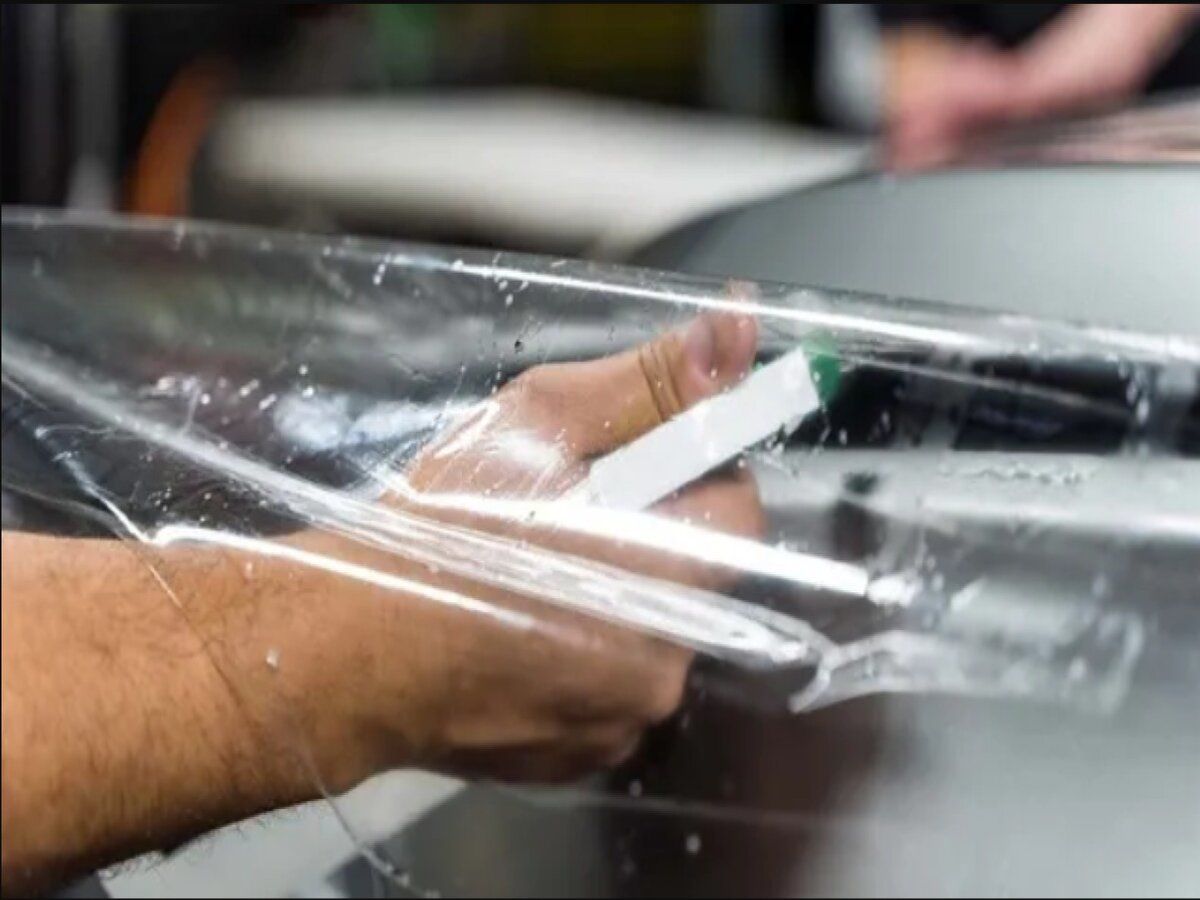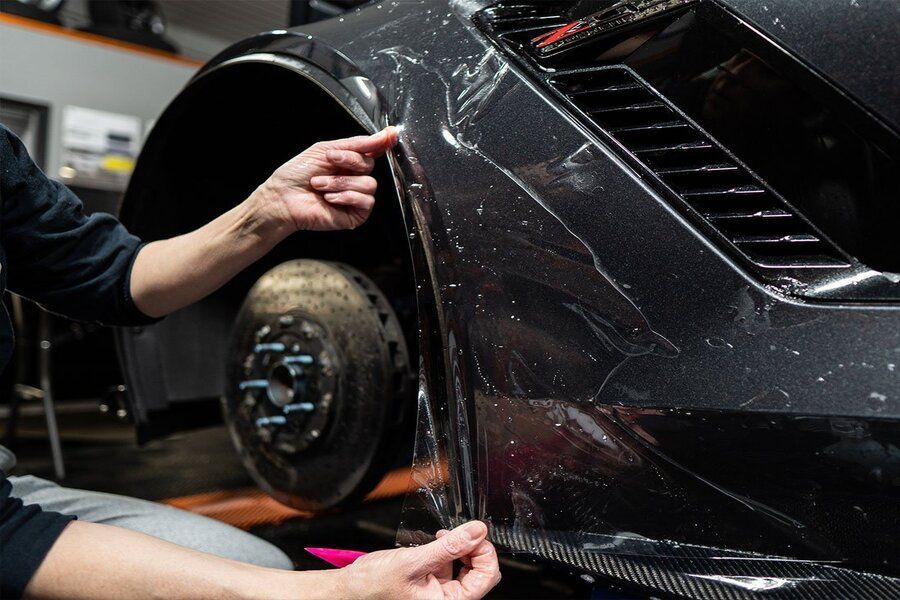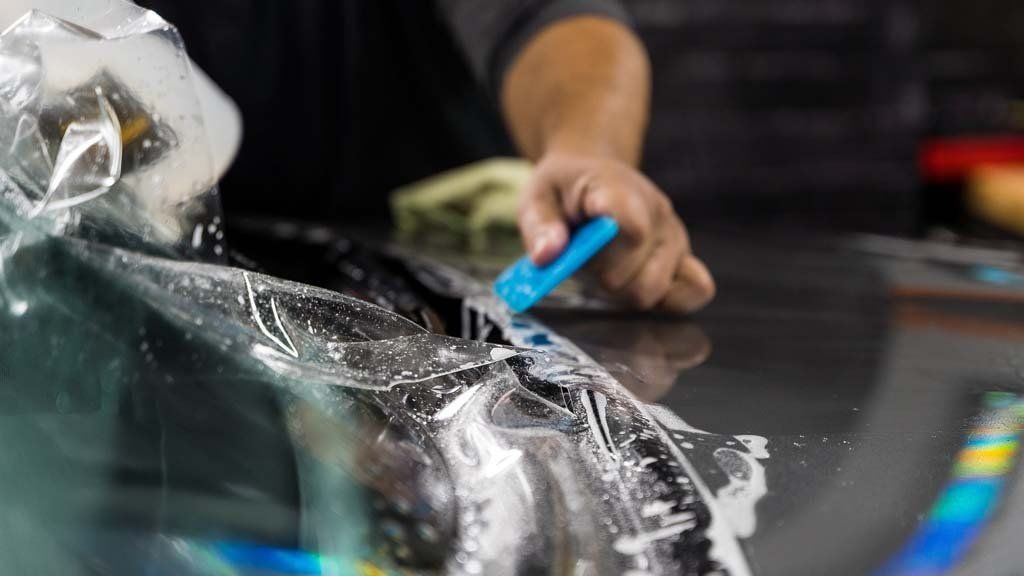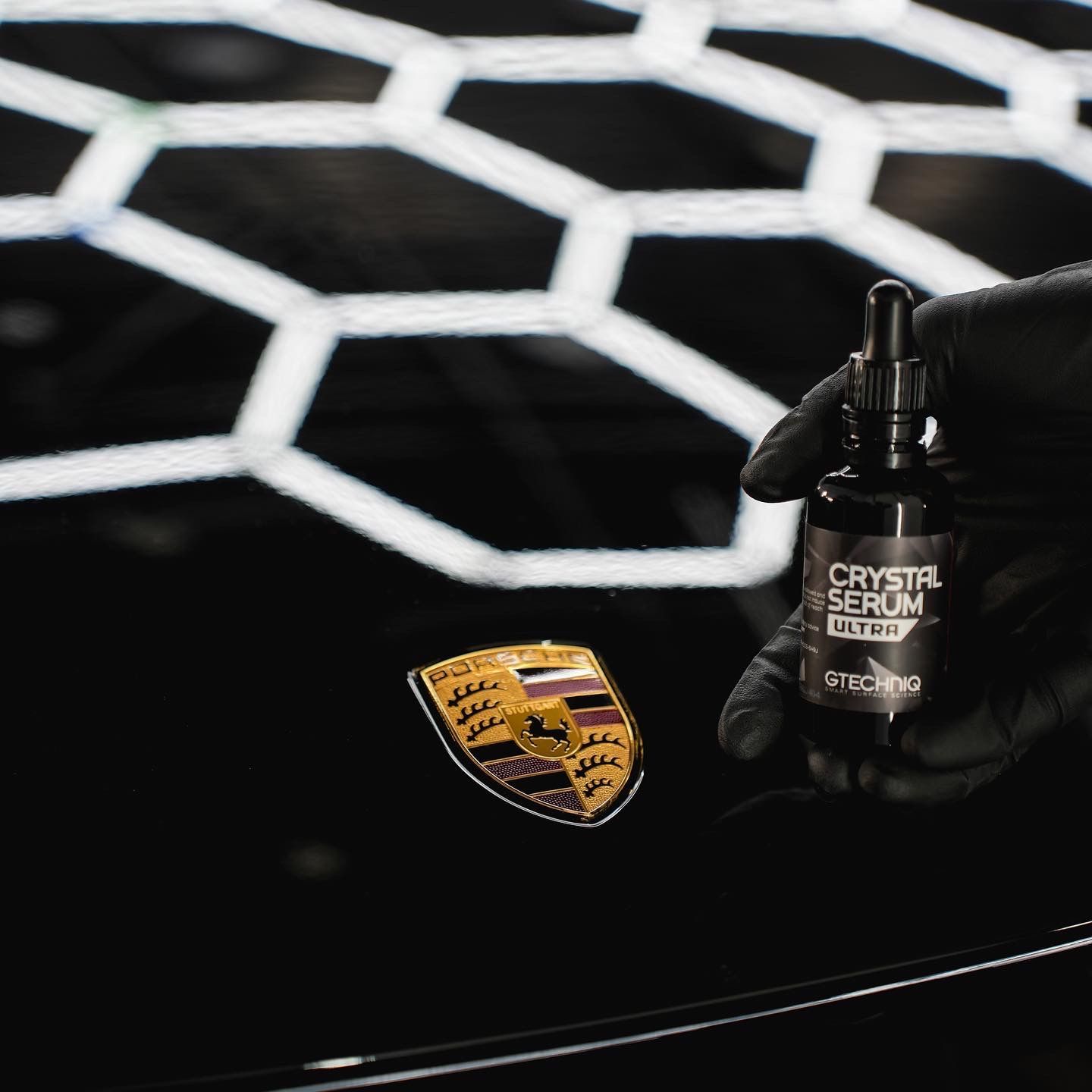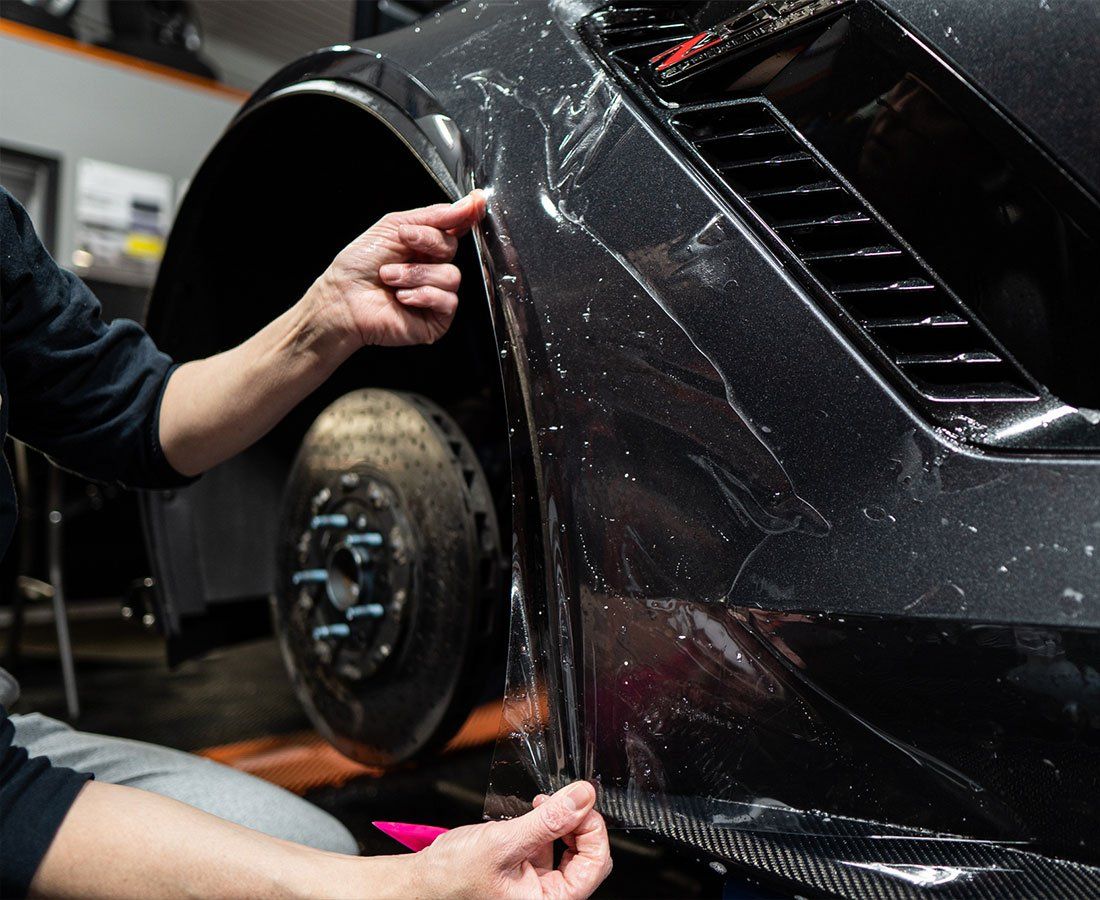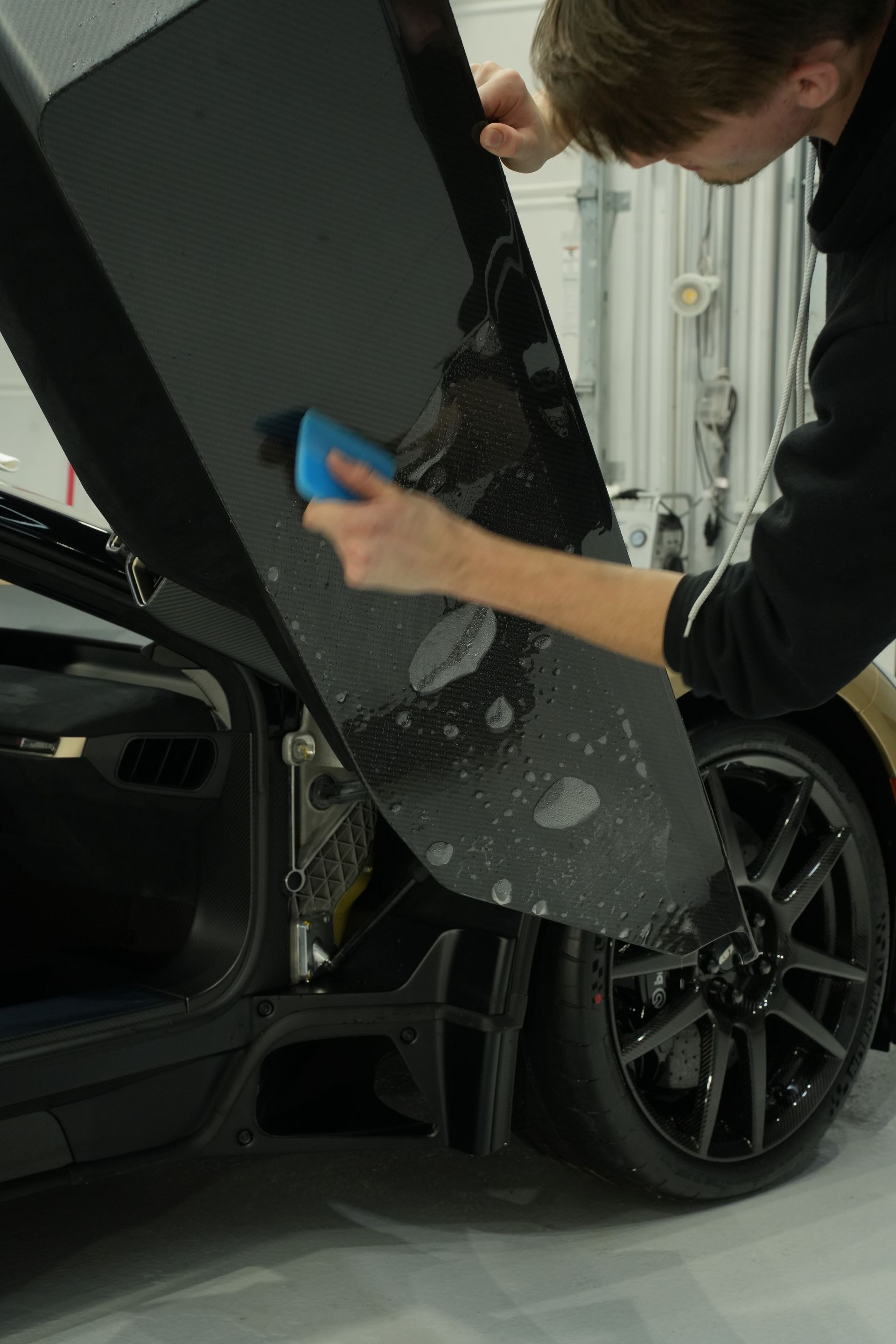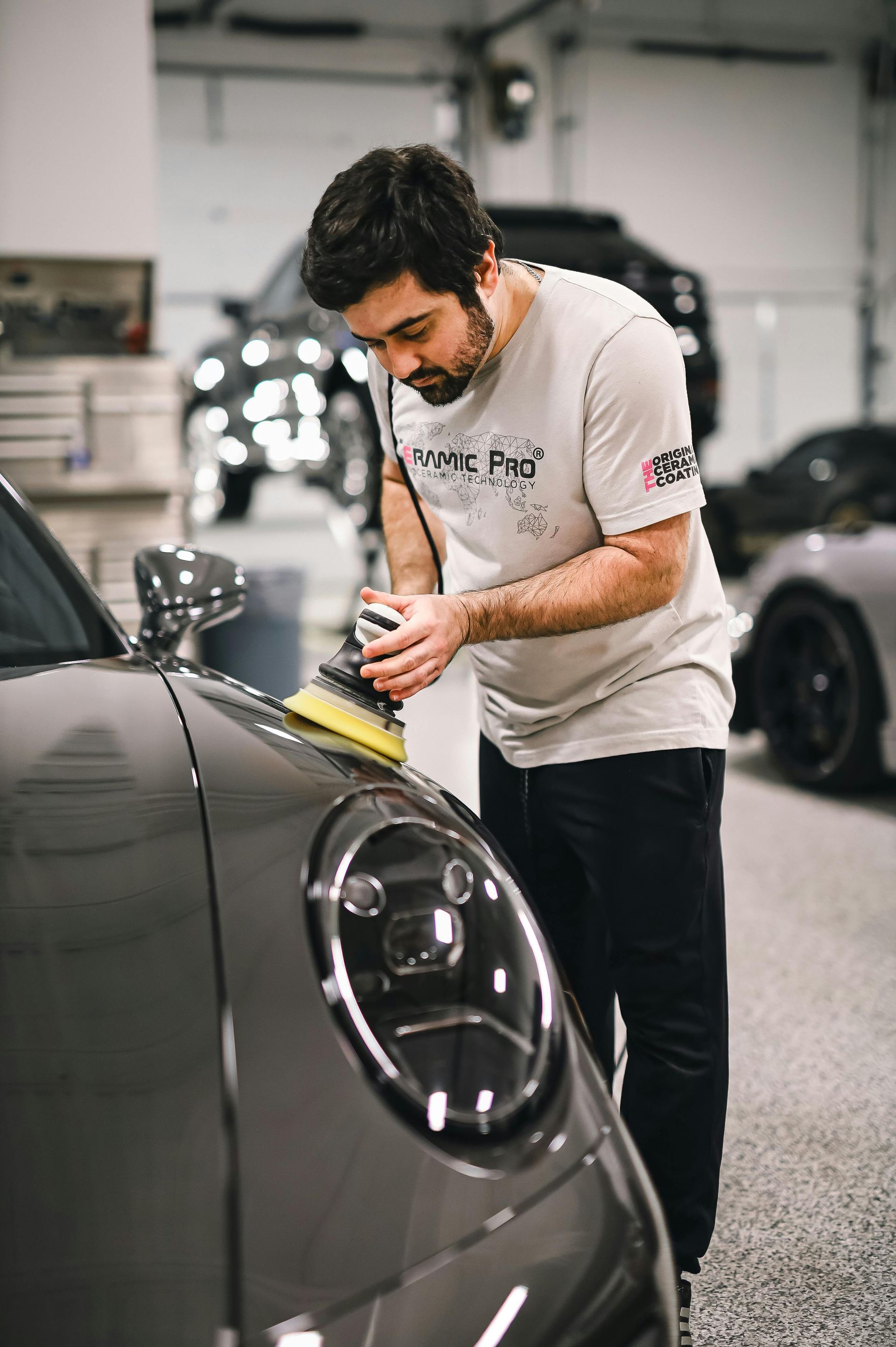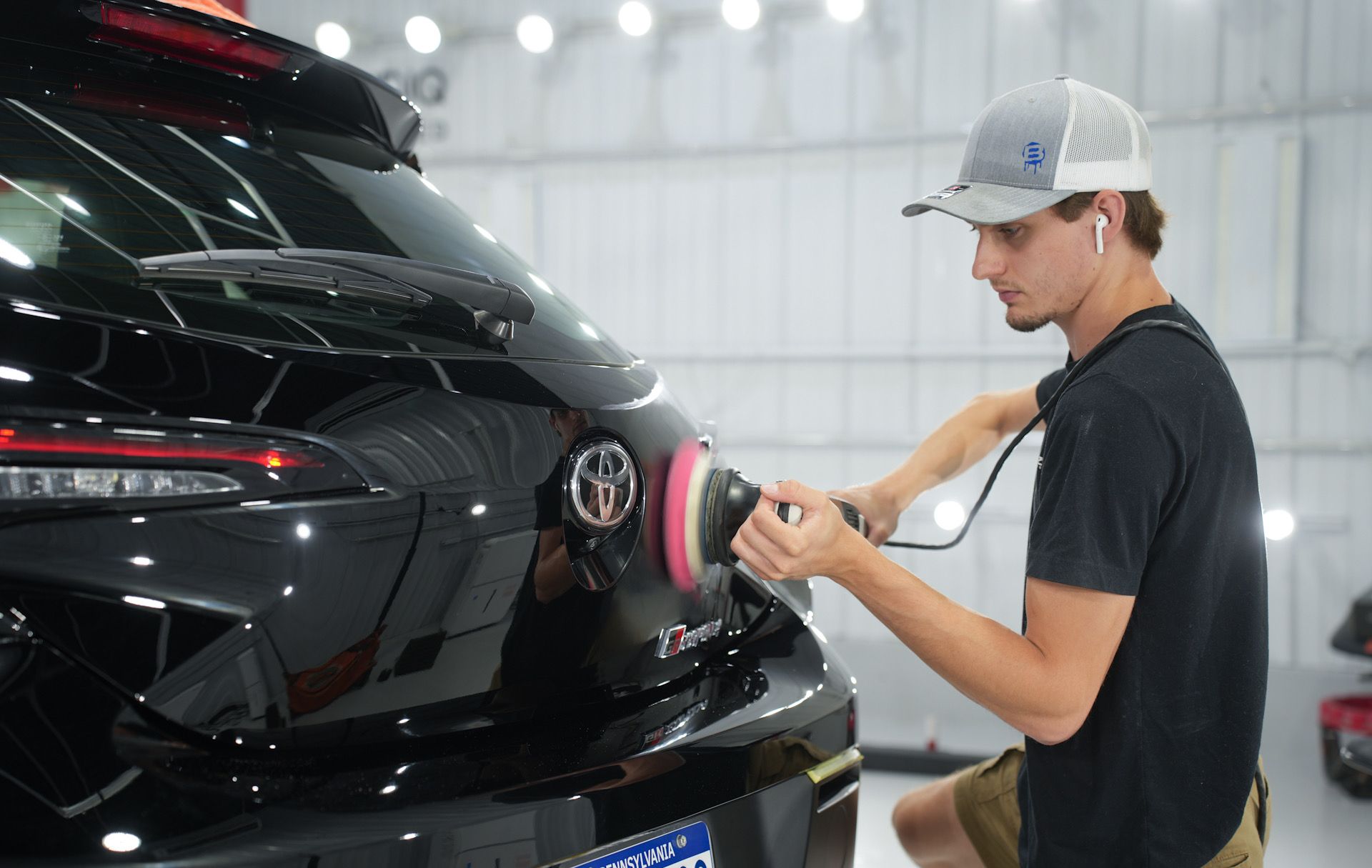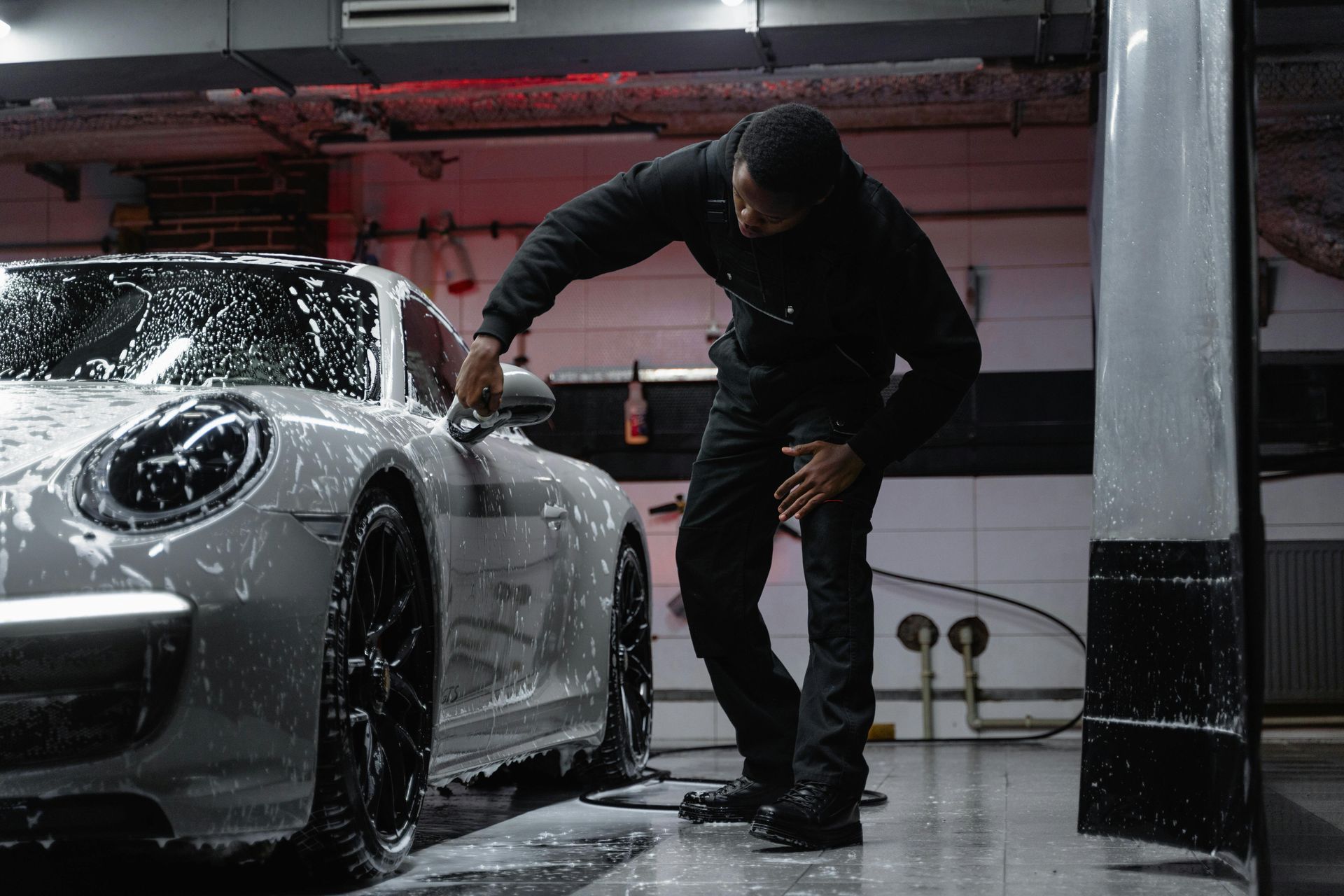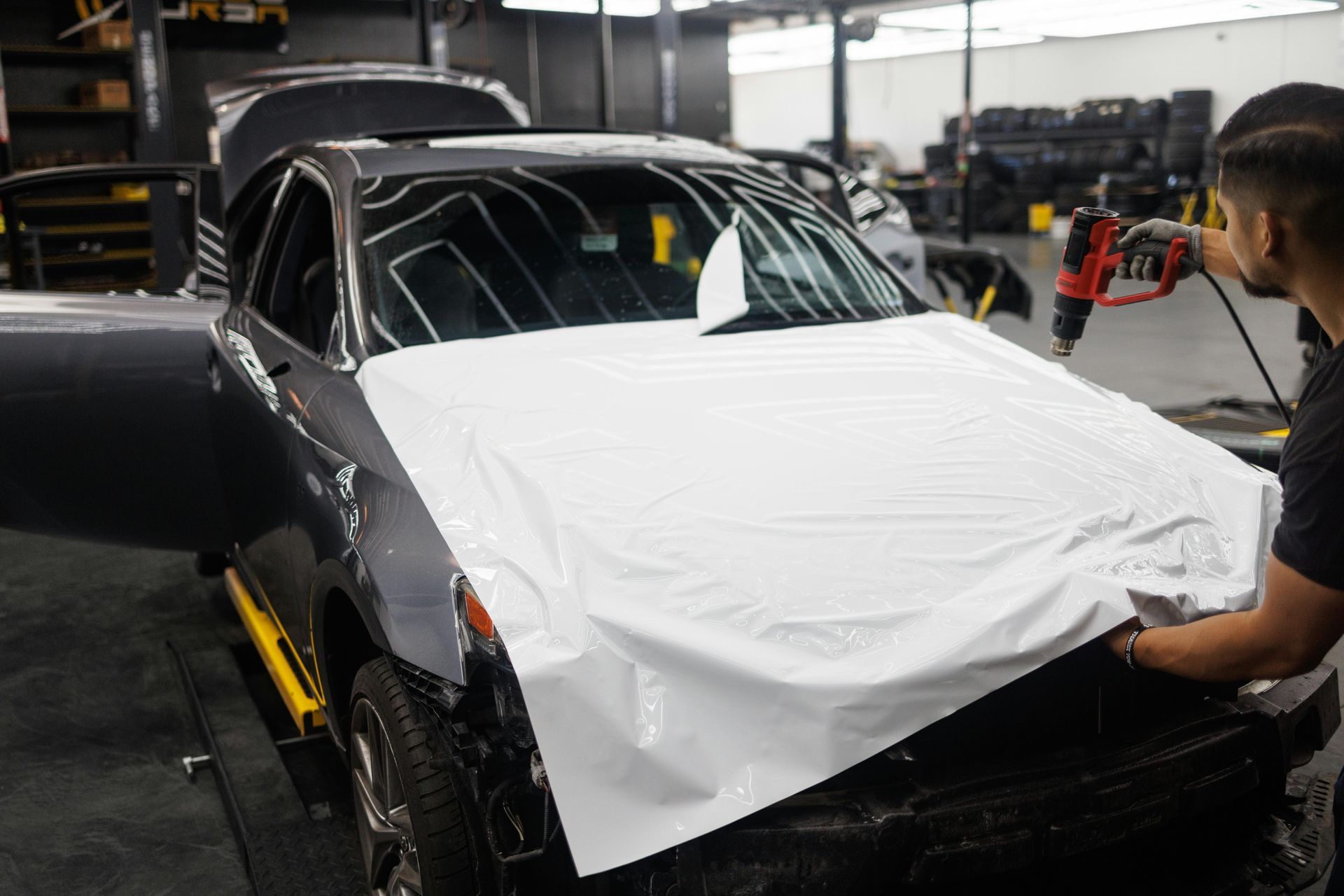How Long Does Paint Protection Film Really Last? What to Expect Year by Year
GET A QUOTE (484) 866-3022When you invest in paint protection film, you’re not just preserving your vehicle’s appearance—you’re safeguarding its value. PPF serves as a transparent shield that defends your car against damage from the elements, environmental contaminants, and everyday driving. But how long does paint protection film actually last? Is it a one-time solution or something that needs upkeep and eventual replacement?
In this guide, we’ll break down the expected lifespan of PPF year by year, discuss the factors that influence its durability, highlight signs it's time for a replacement, and share professional tips to extend its life. By the end, you'll understand exactly what to expect from your paint protection film and why professional installation makes all the difference.
What Is Paint Protection Film?
Paint protection film (PPF) is a virtually invisible urethane material applied to the painted surfaces of a vehicle. It acts as a durable, high-performance layer that resists damage from UV rays, bird droppings, road debris, tree sap, and more. Advanced films even have self-healing properties that allow minor surface wear to disappear when exposed to heat.
For car owners in Bethlehem, PA, where climate shifts and road conditions can vary greatly throughout the year, PPF is a smart choice to maintain your vehicle's pristine condition.
Year-by-Year Breakdown of Paint Protection Film Lifespan
Year 1: Settling In and Initial Protection
In the first year after application, paint protection film is at its peak performance. It adheres perfectly to the surface and provides maximum resistance against environmental factors. The self-healing topcoat will actively maintain a smooth surface when exposed to heat or sunlight.
- What to Expect: Your car will maintain a showroom-quality appearance. No signs of deterioration should be present if the film was installed professionally.
- Tip: Avoid harsh car washes and abrasive cleaning methods during the first few weeks to allow the adhesive to fully cure.
Year 2–3: Maintaining Gloss and Clarity
During the second and third years, the paint protection film continues to perform well. As long as the vehicle is maintained properly, the film will retain its clarity and finish.
- What to Expect: Minimal signs of wear. You might notice some debris buildup along the edges if not regularly cleaned.
- Tip: Schedule annual inspections with your detailing specialist to ensure the film remains intact and clean.
Year 4–5: Signs of Aging Begin to Show
By the fourth or fifth year, the film starts to experience some natural aging, especially if exposed to harsh climates or irregular maintenance. While the film still protects your paint, it may begin to show slight discoloration or dullness due to long-term UV exposure or buildup of contaminants.
- What to Expect: Some loss of gloss or slight cloudiness in certain areas. However, most high-quality films still offer protection.
- Tip: Regular handwashing and occasional application of a PPF-safe sealant can help maintain appearance.
Year 6–7: Time to Evaluate Condition
Approaching six or seven years, most paint protection films will begin to show their age more noticeably. Depending on your environment and maintenance routine, the film may start to degrade, especially at the edges.
- What to Expect: Visible signs of deterioration, such as yellowing or edge lifting. Reduced self-healing ability.
- Tip: If signs are significant, consider removing and reapplying the film to maintain full protection.
Year 8–10: Replacement Recommended
While some premium PPF products are marketed as lasting up to 10 years, the average lifespan typically falls within the 5–7 year range. By year 8 or later, most films will require replacement to ensure your vehicle remains fully protected.
- What to Expect: Loss of clarity, potential cracking, and reduced adhesive performance.
- Tip: Replacing the film at this stage helps avoid damage to the underlying paint and maintains the vehicle’s resale value.
Factors That Influence Paint Protection Film Durability
The longevity of paint protection film isn’t just about the material itself—it depends heavily on several key factors:
1. Climate and Environmental Conditions
Hot summers, icy winters, road salt, and frequent temperature shifts—like those in Pennsylvania—can all affect the integrity of PPF over time. UV exposure and environmental pollutants contribute to faster wear.
2. Maintenance and Cleaning Practices
Regular, gentle hand washing and using PPF-safe products go a long way in extending your film’s life. Automated car washes or abrasive cleaners can shorten its lifespan significantly.
3. Driving Habits and Road Exposure
Daily highway driving or long commutes on gravel or poorly maintained roads increase the risk of damage from road debris. The more exposure your car has to harsh driving conditions, the harder your PPF has to work.
4. Installation Quality
Professional installation is crucial. Poorly applied PPF may lift at the edges, trap bubbles, or wear unevenly. Choosing an experienced installer ensures maximum coverage, proper alignment, and long-term adhesion.
Signs It’s Time to Replace Your Paint Protection Film
Wondering when it’s time to consider replacing your PPF? Look for these telltale signs:
- Yellowing or cloudiness that doesn’t improve with cleaning
- Peeling or lifting edges, particularly around mirrors, hoods, or wheel wells
- Reduced clarity or gloss, making the paint underneath look dull
- Increased surface wear that doesn't respond to heat or maintenance
- Cracking or brittleness, especially on older films
If you notice any of these, it may be time to visit a professional to assess your options.
Tips for Extending the Life of Paint Protection Film
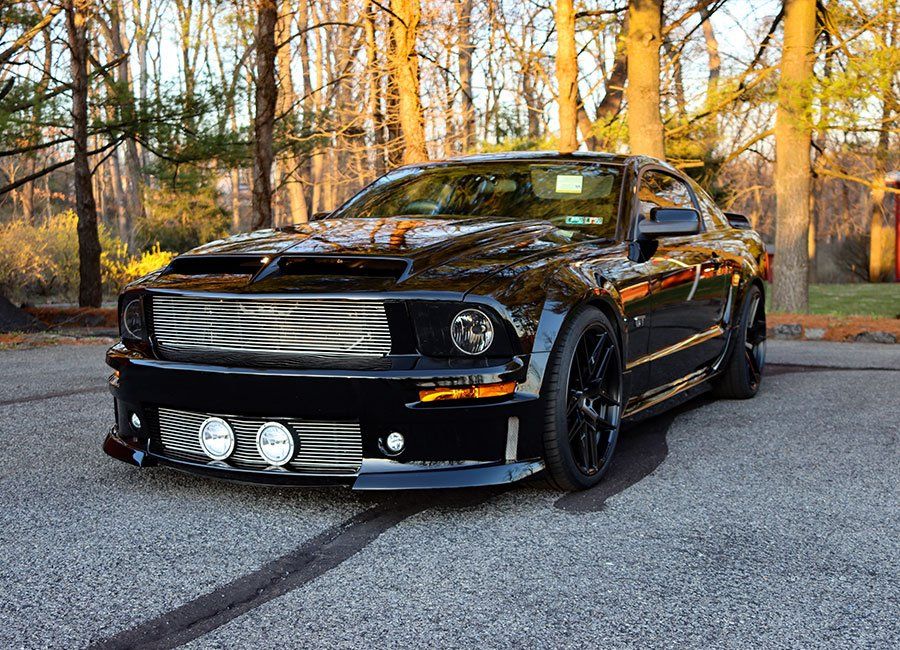
Want your PPF to last as long as possible? Here are a few best practices:
✅ Wash your vehicle regularly
Stick to a gentle hand wash using pH-neutral soaps and microfiber towels. Avoid pressure washers near the edges of the film.
✅ Use PPF-safe detailing products
Avoid waxes and sealants with strong solvents. Instead, use products specifically formulated for paint protection film.
✅ Park in shaded or covered areas
Reducing UV exposure can help delay yellowing and deterioration.
✅ Schedule professional inspections
A detailing expert can identify early signs of wear and suggest touch-ups or replacements when necessary.
✅ Don’t delay repairs
If your film is lifting or showing signs of wear, address it promptly. Small issues can escalate if left unchecked.
Why Professional Installation Matters
A quality paint protection film is only as good as the hands that install it. At Beadz Auto Detailing, we use only premium PPF materials and apply them with precision, care, and years of hands-on experience. Proper alignment, edge sealing, and surface prep are vital to ensure the film bonds correctly and delivers long-lasting protection.
Final Thoughts: How Long Will Your Paint Protection Film Last?
In most cases, a professionally installed paint protection film can last between 5 to 7 years, with some high-end films lasting up to 10 years under optimal conditions. However, longevity depends greatly on your climate, driving habits, maintenance routine, and the quality of installation. By understanding what to expect year by year and taking the right steps to care for your vehicle, you can enjoy long-lasting protection and a flawless finish for years to come.
Protect Your Investment with Beadz Auto Detailing in Bethlehem, PA
When it comes to paint protection film, trust the experts at Beadz Auto Detailing. Our team specializes in high-precision applications using industry-leading films that deliver superior protection and long-term value. With a reputation for quality workmanship, customer satisfaction, and a passion for automotive care, we’re the go-to choice for PPF installation in Bethlehem, PA.
Ready to shield your vehicle with long-lasting protection? Contact Beadz Auto Detailing today for a consultation. Experience the difference that true craftsmanship makes.

